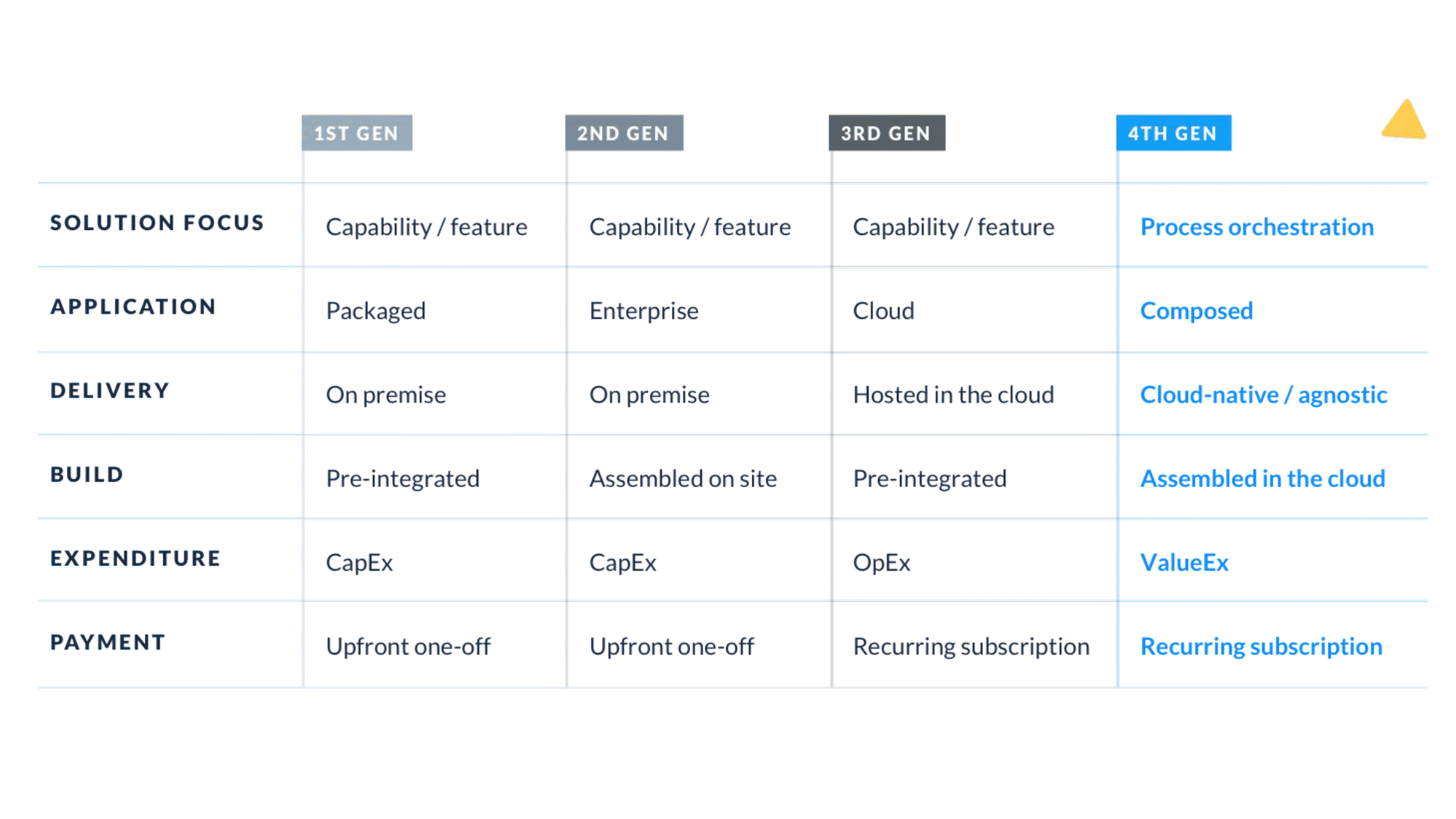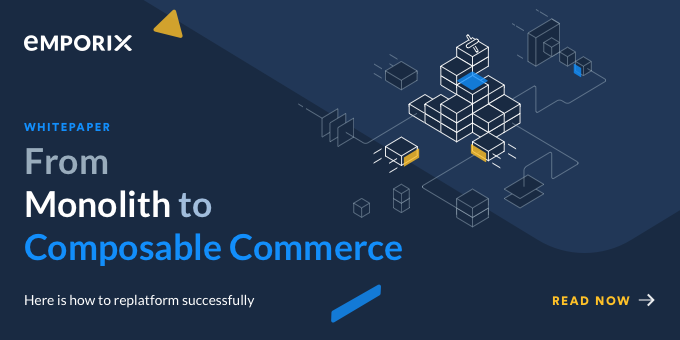The 4th Generation of Digital Commerce
A decade or so ago, when e-commerce solutions were just starting to become commonplace in digital transformation, one of the things feared by businesses was the concept of vendor lock-in. If they were to rely solely on a single company or technology platform to provide all of their cloud services end-to-end, they wouldn’t have the flexibility to adapt or innovate. If that was seen as a disadvantage a decade ago, it’s almost guaranteed to set your business up for failure today.
How can your business take advantage of rapid changes in the market or growing consumer trends if you’re contracted to one monolithic vendor with a single, static platform? It might be a good fit when you first purchase and deploy it, but if the past eighteen months have taught us anything it’s that things change quickly, and your business needs the agility and flexibility to adapt.
.png.png?width=200&name=Untitled%20presentation%20(4).png.png) Today, hopping from one monolithic platform to another is regarded as an archaic, expensive, and outdated approach to digital commerce. Increasingly, businesses are waking up to the need to be agile where their technology is concerned, largely to keep pace with customer expectations around convenience and service, but also to ensure they are employing the very latest advancements in new technologies. Technologies that allow them to customize their e-commerce solution on the fly with modular-based architecture and microservices. Technology that’s open, flexible, and agile enough so that when you do need to add in another feature or service, you don’t have to reinvent the wheel or go back to square one. Using this kind of technology to maintain a positive and consistent customer experience across all channels - particularly those which are new or emerging - has become absolutely critical for retailers, B2B and B2C alike, since the boom in online behavior sparked by the pandemic.
Today, hopping from one monolithic platform to another is regarded as an archaic, expensive, and outdated approach to digital commerce. Increasingly, businesses are waking up to the need to be agile where their technology is concerned, largely to keep pace with customer expectations around convenience and service, but also to ensure they are employing the very latest advancements in new technologies. Technologies that allow them to customize their e-commerce solution on the fly with modular-based architecture and microservices. Technology that’s open, flexible, and agile enough so that when you do need to add in another feature or service, you don’t have to reinvent the wheel or go back to square one. Using this kind of technology to maintain a positive and consistent customer experience across all channels - particularly those which are new or emerging - has become absolutely critical for retailers, B2B and B2C alike, since the boom in online behavior sparked by the pandemic.
According to a survey by PwC, almost one in three (32%) customers say they’re now likely to walk away from a brand they love after just one negative digital experience. That doesn’t give businesses much margin for error when it comes to meeting the needs of their customers, and those needs are expanding rapidly. Digital self-service now outranks direct human interaction for the majority of consumers, which means channels such as mobile, web, voice, and chat are becoming essential tools for doing business. Even in the world of B2B commerce, where human interaction is still highly valued at certain points in the buying journey, customers want greater self-serve capabilities and a digital experience that’s closer to the one they experience elsewhere in everyday life.
Why does all of this matter? Because in both B2B and B2C commerce the monolithic one-size-fits-all approach is no longer viable. Businesses need agility and flexibility, and that is what has ultimately given rise to this movement toward what will eventually be regarded as the fourth generation of digital commerce.
The road to digital commerce
Over the years, e-commerce has gone through several iterations that can best be broken down into four generations.
The first generation was a fully packaged CapEx solution that had to be delivered and implemented on-site, forcing businesses to buy into a single platform that might have to last them years. This is our monolith were using private APIs and pre-packaged services made adding new customer-friendly features or services virtually impossible.
The second generation built on this by adding enterprise-grade options, allowing businesses to get capabilities and features tailored to their needs, but platforms still required hefty upfront payments and had to be delivered on-premise.
The third generation, which is where many e-commerce businesses currently are, brought cloud-based hosting into the mix and introduced subscription-based payment models. This was a turning point because it transformed technology investment into an OpEx as opposed to a CapEx solution, easing the pressure on CFOs and affording businesses more scalability and agility.
However, this generation still has limitations as it has not yet embraced the full flexibility and benefits that technologies such as the cloud and APIs have to offer when it comes to creating the most powerful digital commerce experiences.
What is Digital Commerce 4.0?
The fourth generation of digital commerce is what promises to leverage microservices and open APIs to new levels, and it’s already becoming a reality. With this approach technology providers and their retail customers can take a best-of-breed patchwork approach to overcome all of their e-commerce challenges by engaging specialist, individual digital commerce solutions as part of a flexible digital platform that can cater to all and update on an ongoing basis.
This leaves the monolith behind and instead accelerates innovation, allowing technology providers to become highly proficient in certain aspects of digital commerce technology instead of trying to create a limited, packaged, one-size-fits-all solution.
This is all made possible by taking an API-first, microservice-based, and cloud-native approach to solution development. Businesses can enjoy stateless elasticity and scalability not afforded by the generations that came before. Gone are the days of vendor lock-ins and one-off, high-cost investments. Instead, businesses can take advantage of the very best the industry has to offer, tying together solutions from multiple vendors under one digital umbrella.
Welcome to Digital Commerce 4.0.
To find out how Emporix’s fourth-generation digital commerce approach can help your B2B or B2C commerce business maximize it's potential online, or if you’re a technology vendor looking for a dynamic and agile partner, register your interest here.

